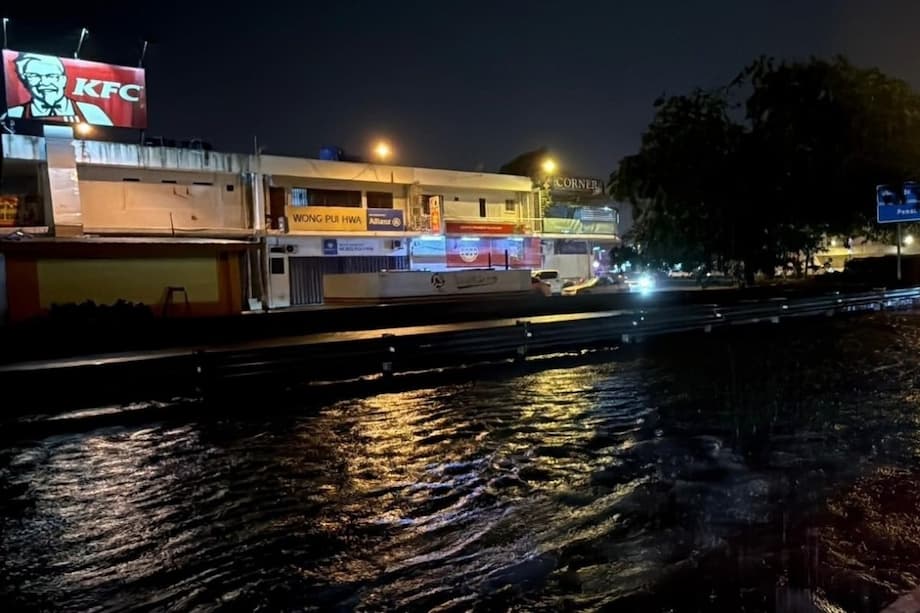Torrential rain triggers deadly landslides and a major blackout across Sabah
Relentless downpours across Malaysia’s Sabah state over the weekend unleashed a chain of landslides and flash floods that killed residents, destroyed homes and toppled a high voltage transmission tower. The collapse of the tower near Kampung Sarapung in Penampang on Saturday evening severed a crucial power corridor to the east coast. The outage rippled across hundreds of kilometers, leaving about 230,000 consumer accounts without electricity at its peak in Sandakan, Lahad Datu, Kinabatangan, Kunak, Semporna and Beluran. Tawau also reported localized disruptions as the grid responded to the sudden loss of supply.
- Torrential rain triggers deadly landslides and a major blackout across Sabah
- How a single tower failure cut power across the east coast
- Deadly week of floods and slope failures
- Government response and restoration timeline
- Voices from the ground
- Why Sabah faces landslide risk and grid fragility
- What residents can do during intermittent outages
- Key Points
Video from the scene showed the stricken structure leaning at an angle before it failed under saturated soil and slope movement. Sabah Electricity Sdn Bhd, the state utility, said restoration began within hours through a mix of local generation and network reconfiguration. Many neighborhoods regained supply on Sunday, yet tens of thousands were still dealing with intermittent or prolonged blackouts by Monday as emergency teams fought bad weather, blocked roads and unstable ground along the transmission route. The landslide that brought down the tower was fatal, part of a wider disaster week that also claimed multiple lives in other districts.
How a single tower failure cut power across the east coast
The fallen structure, known as Tower 5 on the 275 kV Kolopis to Segaliud corridor, sits on Sabah’s west coast near the Kolopis main substation. The corridor carries bulk power from major generating hubs around Kimanis and Sepanggar to demand centers on the east coast. At around 5.05 pm Saturday, both circuits on the Kolopis to Segaliud Line 1 and 2 tripped after heavy rain triggered the slope failure at Penampang. A restart attempt at 7.05 pm failed, and field crews later confirmed the tower had collapsed. Another structure, Tower 9 near Kampung Guromboi, had soil erosion issues but was not the primary cause.
Transmission grids operate with automatic protection systems that isolate faults within milliseconds to prevent further damage. When a tower falls, conductors can short or tension can tear hardware, so relays trip both circuits and large blocks of load drop offline. That is why a single failure near Kota Kinabalu dimmed lights more than 300 kilometers away in Sandakan and surrounding districts. The event also caused a sudden load loss of roughly 242 megawatts, which required careful rebalancing of generation to prevent further instability.
To bridge the gap while engineers rebuild the corridor, the utility activated local power stations in Sandakan and Tawau and began conductor bridging to reroute supply from the west. This first stage was designed to reconnect the Kolopis to Segaliud path within about two days, weather permitting. During this early phase, about 70,000 customers were expected to face rotational outages during peak demand to keep the system stable.
What engineers are building now
Specialist teams are erecting two Emergency Restoration System towers at the collapse site. These modular, lattice structures can be assembled quickly on difficult ground to carry conductors across a damaged span. The utility expects the ERS installation to take roughly eight days. Once the temporary towers are energized, managers do not plan to continue rotational load shedding, since the network will regain a robust path to the east coast. The company has also planned a permanent replacement tower, budgeted at about 3 million ringgit, with construction targeted to take around three months, subject to ground conditions and access.
Water and telecom knock-on effects
Power outages also interrupted water supplies in some east coast localities because treatment plants and distribution pumps lost electricity. Even after power returns, water services can lag until reservoirs refill and pipelines are repressurized. That lag has sparked frustration in places like Sandakan where residents are coping with both flood cleanup and inconsistent utilities. Coordination between the utility, water department and local councils remains a priority as pumps come back online and repairs proceed.
Deadly week of floods and slope failures
The blackout was one chapter in a broader emergency that unfolded between September 13 and 15. Torrential rain triggered widespread flooding and dozens of landslides across Sabah’s west coast and interior, from Kota Kinabalu and Penampang to Papar and beyond. By Monday afternoon, state officials reported at least 12 fatalities and one person missing, with local tallies later indicating the death toll had climbed further as search and recovery operations continued.
Among the worst incidents occurred at Kampung Cendera Kasih near Kota Kinabalu, where a landslide demolished a wooden house and buried a large family. Seven people, including children aged two, four and nine, were confirmed dead there, while others survived with injuries. The tragedy concentrated attention on the threat of saturated slopes and informal housing built on unstable ground.
In Papar, a landslide at Kampung Maragang Tuntul in the morning hours trapped three people in a makeshift wooden home. Two bodies were recovered while a six year old boy remained missing for hours as teams battled mud and shifting terrain. About 40 minutes later, another slide hit Kampung Mook, burying three houses and killing a woman and her 11 year old son. Separately, a man drowned in Kuala Penyu floodwaters. A 97 year old resident in Penampang was killed in an earlier slide last week as rains intensified.
Heavy rain totals tell part of the story. Kota Kinabalu recorded roughly 138 millimeters in a single night, close to half the city’s typical monthly average. The Malaysian Meteorological Department had issued thunderstorm, heavy rain and strong wind warnings for districts on the west coast and interior as saturated soils pushed slopes to failure. Roads collapsed in multiple places and at least several dozen routes were closed at the height of the crisis. More than 800 people from affected villages sought shelter in temporary evacuation centers in Beaufort, Penampang, Tawau and Membakut as water rose and hillsides weakened.
Government response and restoration timeline
Sabah Chief Minister Datuk Seri Hajiji Noor convened an emergency meeting on Sunday with senior officials and Sabah Electricity’s leadership to accelerate restoration and coordinate disaster operations. He urged caution for field crews working on saturated slopes, called for continuous public updates and asked agencies to maintain full readiness as rain persisted. The state government cancelled Malaysia Day celebrations planned in Kota Kinabalu to redirect resources to rescue and relief.
By late Sunday, supply had been restored to parts of Kunak, Lahad Datu and Semporna. Sections of Tawau, including residential areas, farms and schools, also regained electricity as local generators and network reconfiguration took hold. The utility’s crisis team continued round the clock work to complete the initial bridging of the Kolopis to Segaliud line, followed by the ERS installation at Tower 5.
Financial relief and logistics
Prime Minister Datuk Seri Anwar Ibrahim approved 21 million ringgit in emergency aid for Sabah, on top of earlier federal allocations channelled through the state. He directed the national disaster agency and federal departments to move quickly on relief, infrastructure repairs and essential services, stressing that assistance should reach affected households without delay. The funding covers early support for displaced families and helps agencies restore utilities and clear debris-clogged roads.
Keeping the public informed
State and federal teams have been sharing location specific updates on road closures, shelter capacity, power restoration and water service on official channels. Residents were urged to treat any intermittent outages as temporary while crews stabilize the grid, and to prioritize safety by avoiding slopes, swollen rivers and damaged bridges. Legislators and local leaders reported outages of up to 13 hours in some Sandakan neighborhoods, while urging patience as crews tackled access and weather challenges.
Voices from the ground
The Prime Minister emphasized that lives and livelihoods take precedence while agencies race to stabilize power, water and transport.
“The government’s priority is the safety, welfare, and survival of flood victims. Every impacted household must receive assistance without delay.”
Chief Minister Hajiji Noor said the state had cancelled celebrations to keep focus on rescue and relief.
“The well being, welfare and security of the people are of utmost importance.”
Sabah Fire and Rescue Department director Mohd Pisar Aziz described the grind of search and recovery at landslide sites.
“Our teams are continuing search efforts despite challenging conditions.”
Sabah DAP chairman Datuk Phoong Jin Zhe urged the entire apparatus of government to stay focused on relief rather than ceremony.
“This is not the time for celebration. It is the time for mobilisation.”
Why Sabah faces landslide risk and grid fragility
Sabah’s geography and climate make the state especially vulnerable when the skies open. Mountainous terrain meets the South China Sea and Sulu Sea, and settlements often extend into foothills and steep valleys. When intense rain falls on already saturated slopes, water pressure builds in the soil, reducing friction and allowing hillsides to slide. That process can accelerate in places where vegetation has been removed, drainage is poor or homes sit on cut slopes without sufficient reinforcement. Warnings from forecasters can help, yet persistent rain over several days still raises risk across a wide area.
Climate scientists have documented a trend of heavier short duration downpours in Southeast Asia linked to a warming atmosphere that holds more moisture. For Sabah, that means episodes of intense rain that can arrive on top of seasonal monsoon patterns. The result is more frequent flash floods and a higher chance of slope failures where the terrain is steep and soils are weathered.
The power grid also faces a structural challenge. Much of Sabah’s large generators sit on the west coast, while population centers and industry stretch along the east. High voltage lines like the 275 kV Kolopis to Segaliud corridor knit the system together across jungled mountains and river valleys. When a single structure fails on a key corridor, protective equipment trips the line and large areas can lose supply. Engineers mitigate that risk by building redundant paths, adding local generation and using fast temporary towers to span broken sections, as seen with the ERS deployment at Tower 5.
Authorities are reviewing monitoring of towers and slopes that sit in landslide prone zones, including expanded inspections after major storms, better drainage around foundations and early warning sensors where soil movement is detected. Those steps, paired with hillside planning controls and stronger building practices for homes on vulnerable ground, reduce exposure to events that cannot be entirely avoided.
What residents can do during intermittent outages
Officials expect brief outages to continue in some areas until the ERS towers are energized and the permanent repair is completed. Practical steps can protect homes and health while crews finish the work and while rain persists.
- Conserve electricity during peak hours if supply is limited in your area. Turn off nonessential appliances.
- Keep refrigerator and freezer doors closed to preserve cold if an outage occurs. Use a cooler with ice for medicine if needed.
- Charge phones and power banks while supply is available. Prepare torches and spare batteries.
- Store clean water in containers when taps are on. Pumps and treatment plants can take time to recover after power returns.
- Avoid slopes, drains and riverbanks during and after heavy rain. Watch for cracks in walls or ground that can signal movement and evacuate if you see them.
- Do not run portable generators indoors. Place them outside, far from windows and doors, to prevent carbon monoxide poisoning.
- Follow official updates on power restoration, road closures and evacuation centers from government channels.
- Drive cautiously around damaged roads and never attempt to cross floodwaters.
Key Points
- A landslide collapsed Tower 5 on the 275 kV Kolopis to Segaliud line near Penampang on Saturday, cutting power to about 230,000 east coast accounts.
- Six districts were hardest hit, including Sandakan, Lahad Datu, Kinabatangan, Kunak, Semporna and Beluran. Tawau reported localized disruptions.
- Initial reconnection uses local generators and conductor bridging, with ERS towers to be installed in about eight days at the collapse site.
- Roughly 70,000 customers faced rotational outages during early stabilization, with the goal of ending rationing once ERS towers are live.
- A permanent replacement tower is planned at an estimated cost of 3 million ringgit, with work expected to take around three months.
- Heavy rain across Sabah killed multiple residents and destroyed homes. More than 800 people took shelter in evacuation centers as roads and slopes failed.
- The state cancelled Malaysia Day celebrations to focus on rescue and relief. The federal government approved 21 million ringgit in emergency aid.
- Water supply disruptions persisted in some areas as treatment plant pumps awaited stable power.
- Authorities urged caution around slopes and floodwaters and promised frequent updates as crews restore critical infrastructure.












